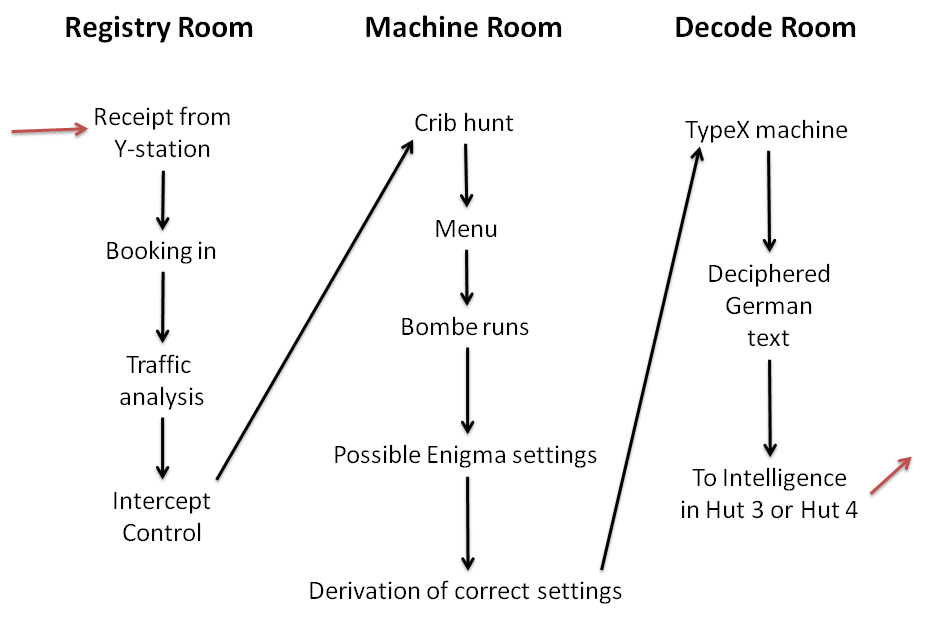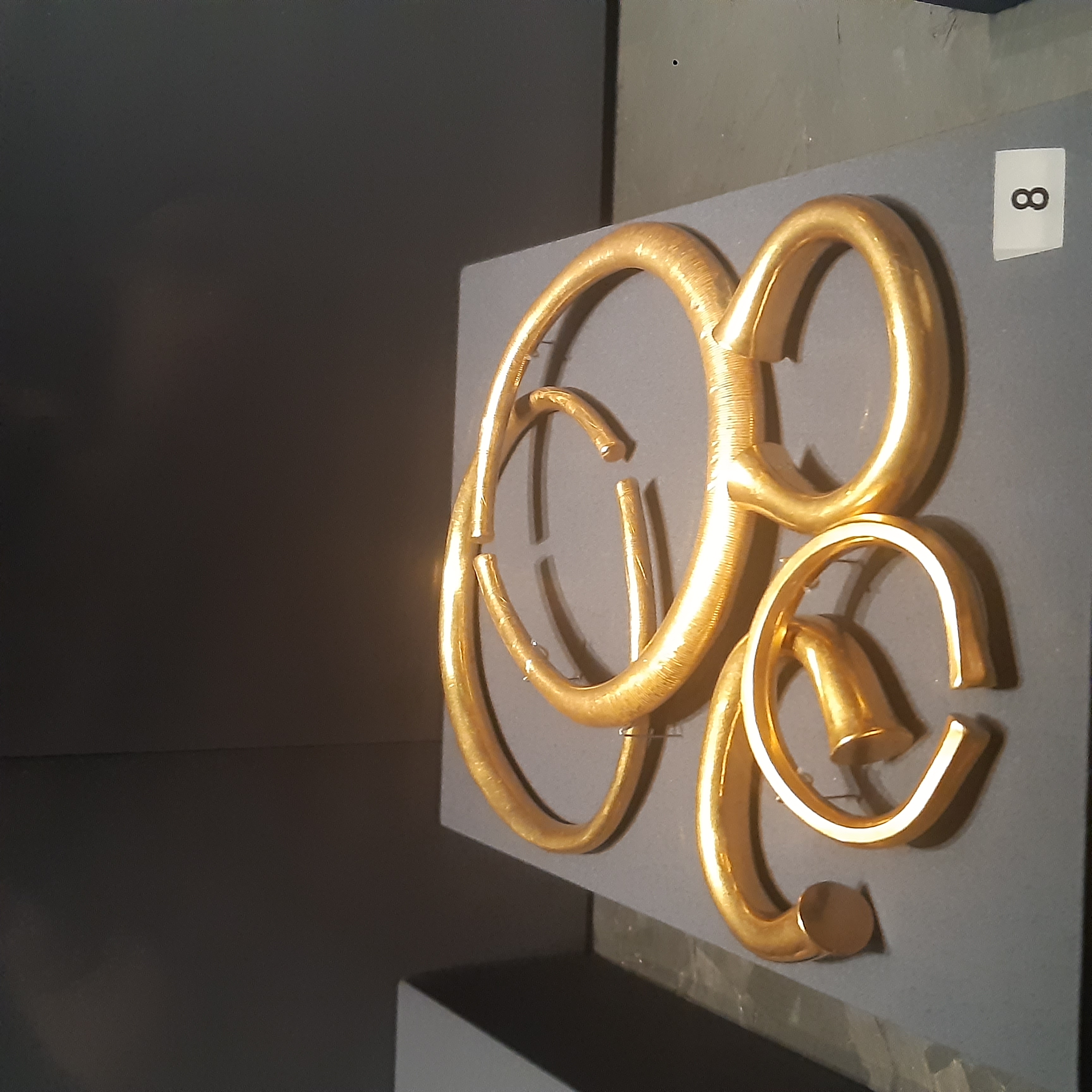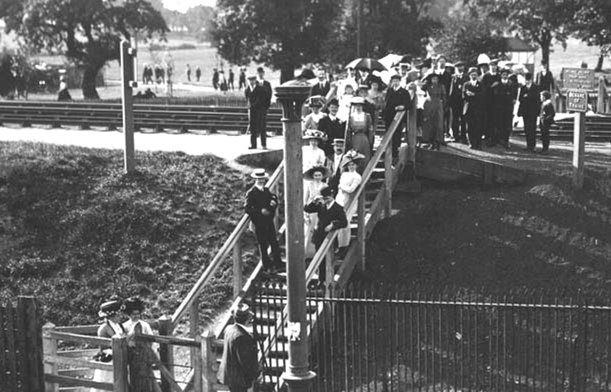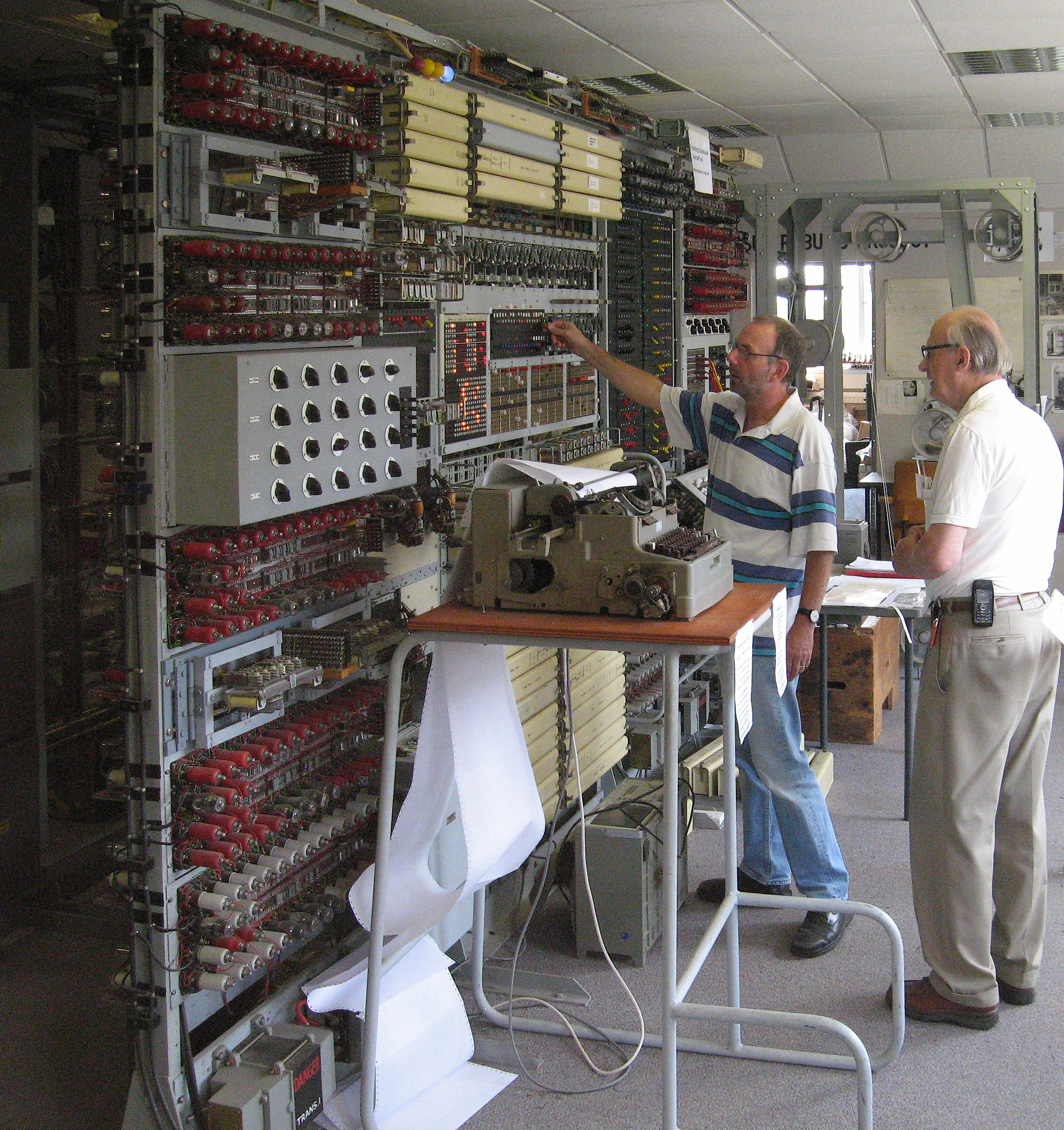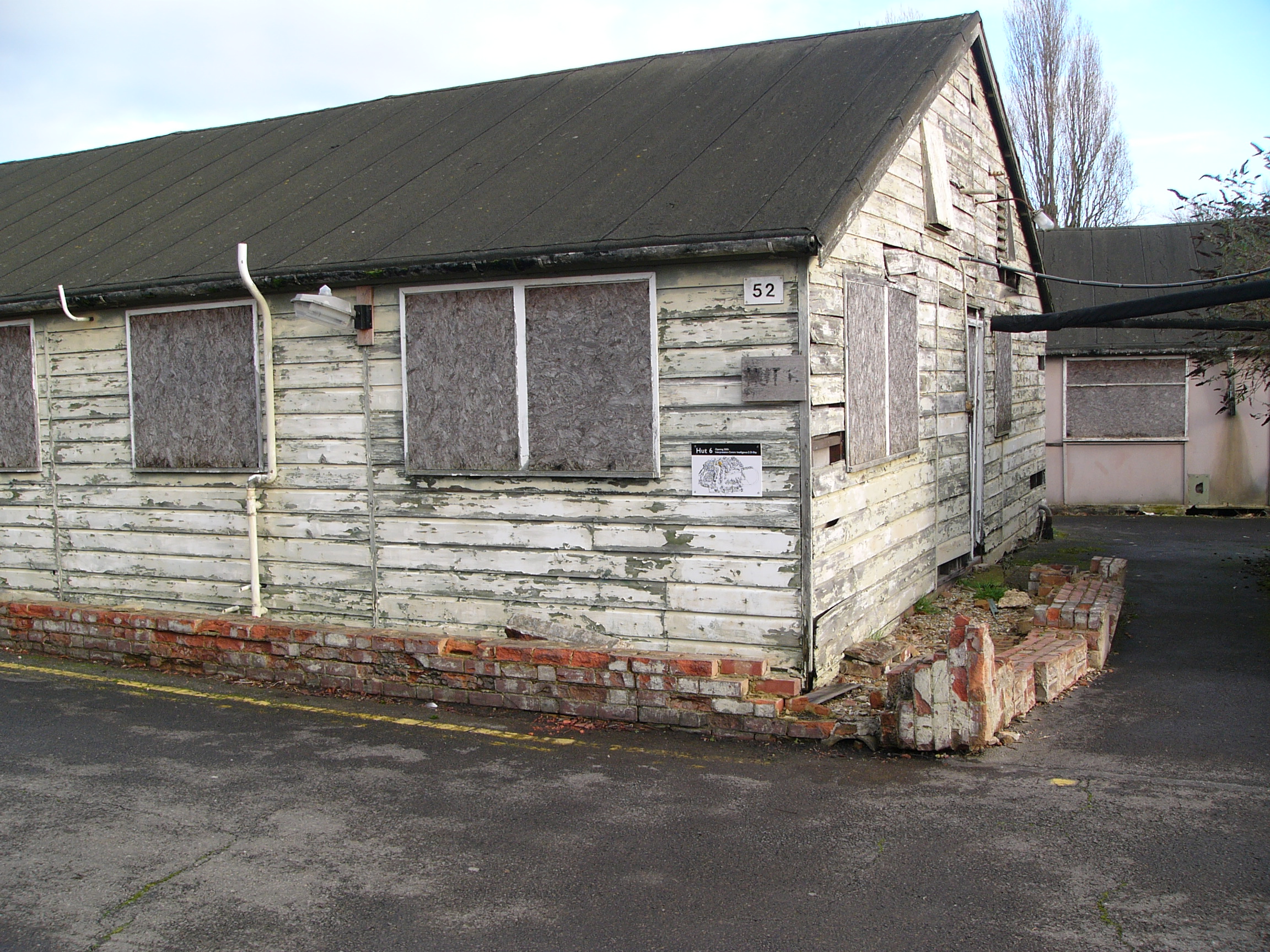|
Bletchley Park
Bletchley Park is an English country house and Bletchley Park estate, estate in Bletchley, Milton Keynes (Buckinghamshire), that became the principal centre of Allies of World War II, Allied World War II cryptography, code-breaking during the Second World War. During World War II, the estate housed the Government Code and Cypher School (GC&CS), which regularly penetrated the secret communications of the Axis Powers most importantly the German Enigma machine, Enigma and Lorenz cipher, Lorenz ciphers. The GC&CS team of codebreakers included John Tiltman, Dilwyn Knox, Alan Turing, Harry Golombek, Gordon Welchman, Conel Hugh O'Donel Alexander, Hugh Alexander, Donald Michie, W. T. Tutte, Bill Tutte and Stuart Milner-Barry. The team at Bletchley Park devised automatic machinery to help with decryption, culminating in the development of Colossus computer, Colossus, the world's first programmable digital electronic computer. Codebreaking operations at Bletchley Park ended in 1946 and al ... [...More Info...] [...Related Items...] OR: [Wikipedia] [Google] [Baidu] |
Milton Keynes
Milton Keynes ( ) is a city status in the United Kingdom, city in Buckinghamshire, England, about north-west of London. At the 2021 Census, the population of Milton Keynes urban area, its urban area was 264,349. The River Great Ouse forms the northern boundary of the urban area; a tributary, the River Ouzel, meanders through its linear parks and balancing lakes. Approximately 25% of the urban area is parkland or woodland and includes two Site of Special Scientific Interest, Sites of Special Scientific Interest (SSSIs). The city is made up of many different districts. In the 1960s, the government decided that a further generation of new towns in the United Kingdom, new towns in the South East England , south east of England was needed to relieve housing congestion in London. Milton Keynes was to be the biggest yet, with a population of 250,000 and area of . At designation, its area incorporated the existing towns of Bletchley, Fenny Stratford, Wolverton and Stony Stratford, ... [...More Info...] [...Related Items...] OR: [Wikipedia] [Google] [Baidu] |
Bletchley
Bletchley is a constituent town of Milton Keynes, Buckinghamshire, England, in the south-west of the city, split between the civil parishes in England, civil parishes of Bletchley and Fenny Stratford and West Bletchley, which In 2011 had a combined population of 37,114. Bletchley is best known for Bletchley Park, the headquarters of Britain's World War II codebreaking organisation, and now a major tourist attraction. The National Museum of Computing is also located on the Park. History Origins and early modern history The town name is Old English, Anglo-Saxon and means ''Blæcca's clearing''. It was first recorded in Manorialism, manorial rolls in the 12th century as ''Bicchelai'', then later as ''Blechelegh'' (13th century) and ''Blecheley'' (14th–16th centuries). Just to the south of Fenny Stratford, there was Romano-British town, ''Magiovinium, M'' on either side of Watling Street, a Roman road. Bletchley was originally a minor village on the outskirts of Fenny Stratfo ... [...More Info...] [...Related Items...] OR: [Wikipedia] [Google] [Baidu] |
Hugh Sinclair
Admiral Sir Hugh Francis Paget Sinclair, (18 August 1873 – 4 November 1939), known as Quex Sinclair, was a British intelligence officer. He was Director of British Naval Intelligence between 1919 and 1921, and he subsequently helped to set up the Secret Intelligence Service (SIS, commonly MI6) and GCHQ. Career Sinclair was educated at Stubbington House School and joined the Royal Navy as a cadet aged 13 on 15 July 1886.Christopher Andrew, "Sinclair, Sir Hugh Francis Paget (1873–1939)", rev. ''Oxford Dictionary of National Biography'', Oxford University Press, 2004; online edn, May 2008 He was promoted to lieutenant on 31 December 1894. He entered the Naval Intelligence Division at the beginning of the First World War. He became Director of Naval Intelligence in February 1919 and Chief of the Submarine Service in 1921. He became the second director of SIS in 1923. He was promoted vice-admiral on 3 March 1926 and full admiral on 15 May 1930. Sinclair also founded G ... [...More Info...] [...Related Items...] OR: [Wikipedia] [Google] [Baidu] |
Max Newman
Maxwell Herman Alexander Newman, FRS (7 February 1897 – 22 February 1984), generally known as Max Newman, was a British mathematician and codebreaker. His work in World War II led to the construction of Colossus, the world's first operational, programmable electronic computer, and he established the Royal Society Computing Machine Laboratory at the University of Manchester, which produced the world's first working, stored-program electronic computer in 1948, the Manchester Baby. Early life and education Newman was born Maxwell Herman Alexander Neumann in Chelsea, London, England, to a Jewish family, on 7 February 1897. His father was Herman Alexander Neumann, originally from the German city of Bromberg (now in Poland), who had emigrated with his family to London at the age of 15.William Newman, "Max Newman – Mathematician, Codebreaker and Computer Pioneer", pp. 176–188 in Herman worked as a secretary in a company, and married Sarah Ann Pike, an Irish schoolteacher ... [...More Info...] [...Related Items...] OR: [Wikipedia] [Google] [Baidu] |
Dollis Hill
Dollis Hill is an area in northwest London, which consists of the streets surrounding the Gladstone Park, London, Gladstone Park. It is served by a London Underground station, Dollis Hill tube station, Dollis Hill, on the Jubilee line, providing good links to central London. It is in the London Borough of Brent, close to Willesden Green, Neasden and Cricklewood, and is in the postal districts of NW2 and NW10 The area is mainly residential (Edwardian terraced and 1920s/30s semi-detached houses) with a restaurant, greengrocer and convenience stores near the underground station. The Dollis Hill ward has the highest Irish people, Irish population in London. Dollis Hill played a part in the Second World War as the code-breaking computer used at Bletchley Park was built at the Post Office Research Station in Dollis Hill and the rarely used alternative Churchill Museum and Cabinet War Rooms, Cabinet War Room Paddock (war rooms), bunker for Winston Churchill, Winston Churchill's gove ... [...More Info...] [...Related Items...] OR: [Wikipedia] [Google] [Baidu] |
Post Office Research Station
The Post Office Research Station was first established as a separate section of the General Post Office in 1909. In 1921, the Research Station moved to Dollis Hill, north west London, initially in ex-army huts. The main permanent buildings at Dollis Hill were opened in 1933 by Prime Minister Ramsay MacDonald. In 1968 it was announced that the station would be relocated to a new centre to be built at Martlesham Heath in Suffolk. This was formally opened on 21 November 1975 by Queen Elizabeth and is today known as Adastral Park. The old Dollis Hill site was released for housing, with the main building converted into a block of luxury flats and an access road named Flowers Close, in honour of Tommy Flowers. Much of the rest of the site contains affordable housing administered by Network Housing. World War II In 1943 the world's first programmable electronic computer, Colossus Mark 1, was built by Tommy Flowers and his team, followed in 1944 and 1945 by nine Colossus Mar ... [...More Info...] [...Related Items...] OR: [Wikipedia] [Google] [Baidu] |
Tommy Flowers
Thomas Harold Flowers Order of the British Empire, MBE (22 December 1905 – 28 October 1998) was an English engineer with the British General Post Office. During World War II, Flowers designed and built Colossus computer, Colossus, the world's first programmable electronic computer, to help decipher encrypted German messages. Early life Flowers was born at 160 Abbott Road, Bromley-by-Bow, then the Metropolitan Borough of Poplar, on 22 December 1905, the son of a bricklayer. He came from an impoverished working class background and his grandmother had been a charwoman. He later recalled that as children "we were taught to be frugal in everything". Whilst undertaking an apprenticeship in mechanical engineering at the Royal Arsenal, Woolwich, he took evening classes at the University of London to earn a degree in electrical engineering. In 1926, he joined the telecommunications branch of the General Post Office (GPO), moving to the Post Office Research Station at Dollis Hill in Mi ... [...More Info...] [...Related Items...] OR: [Wikipedia] [Google] [Baidu] |
Colossus Computer
Colossus was a set of computers developed by British cryptanalysis, codebreakers in the years 1943–1945 to help in the cryptanalysis of the Lorenz cipher. Colossus used vacuum tube, thermionic valves (vacuum tubes) to perform Boolean algebra (logic), Boolean and counting operations. Colossus is thus regarded as the world's first computer programming, programmable, electronics, electronic, digital electronics, digital computer, although it was programmed by switches and plugs and not by a stored-program computer, stored program. Colossus was designed by General Post Office (GPO) research telephone engineer Tommy Flowers based on plans developed by mathematician Max Newman at the Government Code and Cypher School at Bletchley Park. Alan Turing's use of probability in cryptanalysis (see Banburismus) contributed to its design. It has sometimes been erroneously stated that Turing designed Colossus to aid the cryptanalysis of the Enigma. (Turing's machine that helped decode Enigma ... [...More Info...] [...Related Items...] OR: [Wikipedia] [Google] [Baidu] |
Stuart Milner-Barry
Sir Philip Stuart Milner-Barry (20 September 1906 – 25 March 1995) was a British chess player, chess writer, World War II cryptologist, and civil servant. He represented England in chess before and after World War II. During World War II he worked at Bletchley Park, from autumn 1943 heading " Hut 6", the section responsible for decrypting German Army and Air Force messages which had been enciphered on the Enigma machine. He was one of four leading cryptologists at Bletchley Park to petition then-Prime Minister Winston Churchill for more resources for their work. After the war he worked in the Treasury, and later administered the British honours system. In chess, he represented England in international tournaments, and lent his name to four opening variations. Early life and education Born in Hendon, London, Philip Stuart was the second of six children to a Professor of German and Teutonic Philology at the University College of North Wales, Edward Leopold Milner-Barry, ... [...More Info...] [...Related Items...] OR: [Wikipedia] [Google] [Baidu] |
Donald Michie
Donald Michie (; 11 November 1923 – 7 July 2007) was a British researcher in artificial intelligence. During World War II, Michie worked for the Government Code and Cypher School at Bletchley Park, contributing to the effort to solve " Tunny", a German teleprinter cipher. He founded The Turing Institute in Glasgow in 1982, alongside Peter Mowforth and Tim Niblett. In 1984, the institute worked under contract from Radian Corp to develop code for the Space Shuttle auto-lander. Early life and education Michie was born in Rangoon, Burma. He attended Rugby School and won a scholarship to study classics at Balliol College, Oxford. In early 1943, however, looking for some way to contribute to the war effort, Michie instead attempted to enrol on a Japanese language course in Bedford for intelligence officers. On arrival, it transpired that he had been misinformed, and instead he trained in cryptography, displaying a natural aptitude for the subject. Six weeks later, he was recr ... [...More Info...] [...Related Items...] OR: [Wikipedia] [Google] [Baidu] |
Conel Hugh O'Donel Alexander
Conel Hugh O'Donel Alexander (19 April 1909 – 15 February 1974), known as Hugh Alexander and C. H. O'D. Alexander, was an Irish-born British cryptanalyst, chess player, and chess writer. He worked on the German Enigma machine at Bletchley Park during the Second World War, and was later the head of the cryptanalysis division at GCHQ for 25 years. He was twice British chess champion and earned the title of International Master. Early life Hugh Alexander was born into an Anglo-Irish family on 19 April 1909 in Cork, Ireland, the eldest child of Conel William Long Alexander, an engineering professor at University College, Cork (UCC), and Hilda Barbara Bennett.Harry Golombek, revised by Ralph Erskine, "Alexander, (Conel) Hugh O'Donel (1909–1974), chess player and cryptanalyst" in the Oxford Dictionary of National Biography, 2004 His father died in 1920 (during the Irish War of Independence), and the family moved to Birmingham, England, where he attended King Ed ... [...More Info...] [...Related Items...] OR: [Wikipedia] [Google] [Baidu] |
